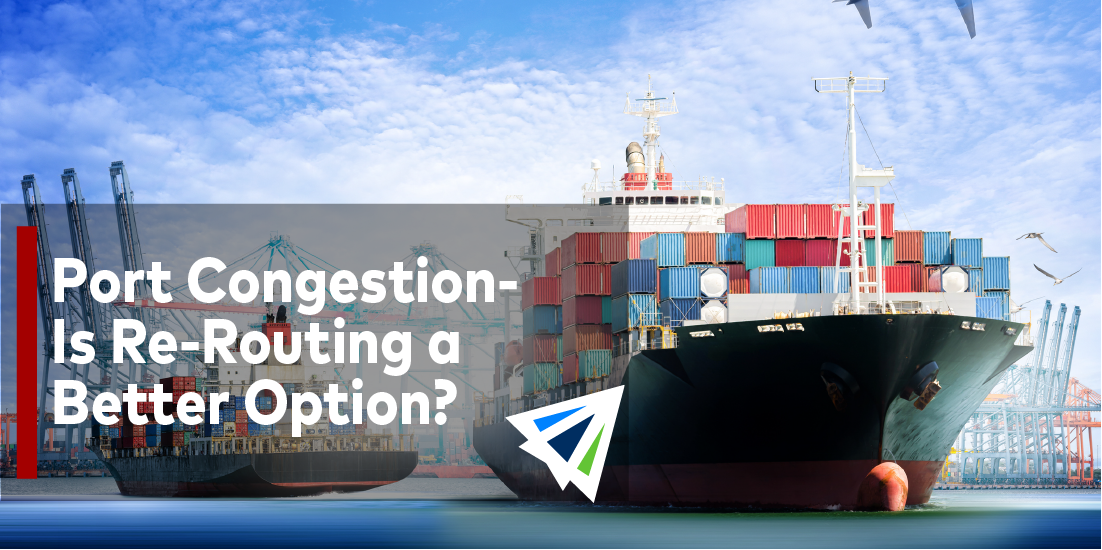It’s no doubt that the shipping industry is being hit hard in recent months. Getting cargo overseas or importing to the U.S. is a real hassle as capacity tightens due to the influx of shipments since COVID broke out. While the initial months of 2020 may have looked grim from an import standpoint, the world has certainly made up for it.
Although there was an initial drop of 20% in shipping volume in the first half of 2020, the back half of the year revealed an increase in import volumes of over 50%. The surprise increase in shipments combined with the impact of the virus itself on port workers has left a few U.S. ports backed up beyond belief.
Reports indicate that at one point, Los Angeles and Long Beach ports had 25 ocean vessels docked waiting to be unloaded as port workers scrambled to get as much done as possible while being short-staffed.
But chances are, you know this already because you’re experiencing it firsthand. And we get it. It’s slow, it’s frustrating, and it’s costing you and your team a lot of time, money, and perhaps even customers.
While there’s nothing you can do about a docked vessel awaiting unloading, there are things you can do now to prepare your future shipments for a swifter delivery in the future.
Re-Routing Cargo
We are seeing more customers opt for alternative routing options than ever before. Routes that would otherwise be considered “less efficient” are becoming the best options simply because the port congestion at LA/Long Beach is so bad. But how does re-routing work, and what routes should you take?
Obviously, every single company’s shipping practices are different. Depending on where you are importing from, and where your inland destination point is within the U.S., any number of routes could work. But the point remains – avoid LA/Long Beach at all costs these days. It’s a guaranteed disaster (at least until the dust settles from COVID-19.)
If you’re looking to find the best re-routing options, the most beneficial thing you can do is to have a conversation with your freight forwarder. So many shippers view their freight forwarders as an ad hoc service provider who’s simply there to handle a transaction, but the truth is that your freight forwarder should actually serve as a source of value to your team. They should be providing you with insight, best practices, and recommendations on what you can do to lower the time and costs associated with your shipments. If they aren’t doing that, it may be time to start searching for a freight forwarder that puts effort into the conversation.
But while re-routing cargo is certainly a great option, there’s another popular alternative:
Switching to Air Shipping
We know, we know. “Air shipping is so much more expensive,” “we never ship via air because…”, etc. etc. etc.
Trust us – we know all the reasons that shippers avoid air shipping. But desperate times call for desperate measures, and the question is, if you are fighting for space on an ocean vessel and are going to pay extra fees and experience obscene delays due to port congestion, is ocean shipping really saving you any money?
This year, we’ve seen more shippers switch to air freight than ever before, and the reason is clear. Air shipping provides a streamlined, efficient, and (nowadays) cost-effective alternative to ocean shipments bound for congested ports.
Obviously, shipping via air requires a different type of planning. Containers are different dimensions, and depending on the nature of your product, preparing your products for shipment and managing your orders/inventory practices may have to change significantly. If that sounds intimidating, remember that that’s what freight forwarders are for.
We see you, we hear you, and we understand more than anyone the exact challenges you and your team are facing right now. If you are eager to find a solution, but are hesitant to embrace alternative options such as air shipping or re-routing your cargo, don’t be. Everything begins with a conversation, and the perfect solution may simply be a phone call away.
We would love to connect with you and hear about your current circumstances and devise a solution for what you’re currently experiencing! That’s all 2020 (and now 2021) has been for us. A game of strategy. We know the shipping industry and you know your products. We’d love the opportunity to help put those two together for the most effective logistics solution moving forward, and that all starts by reaching out to one of our team members to chat.
